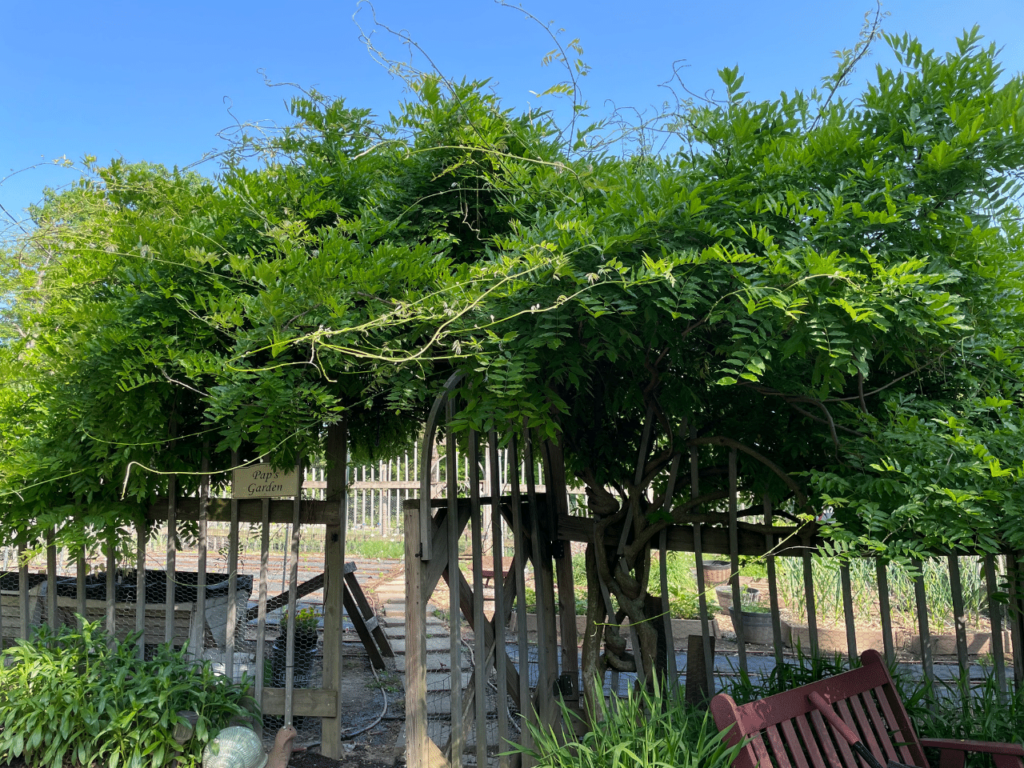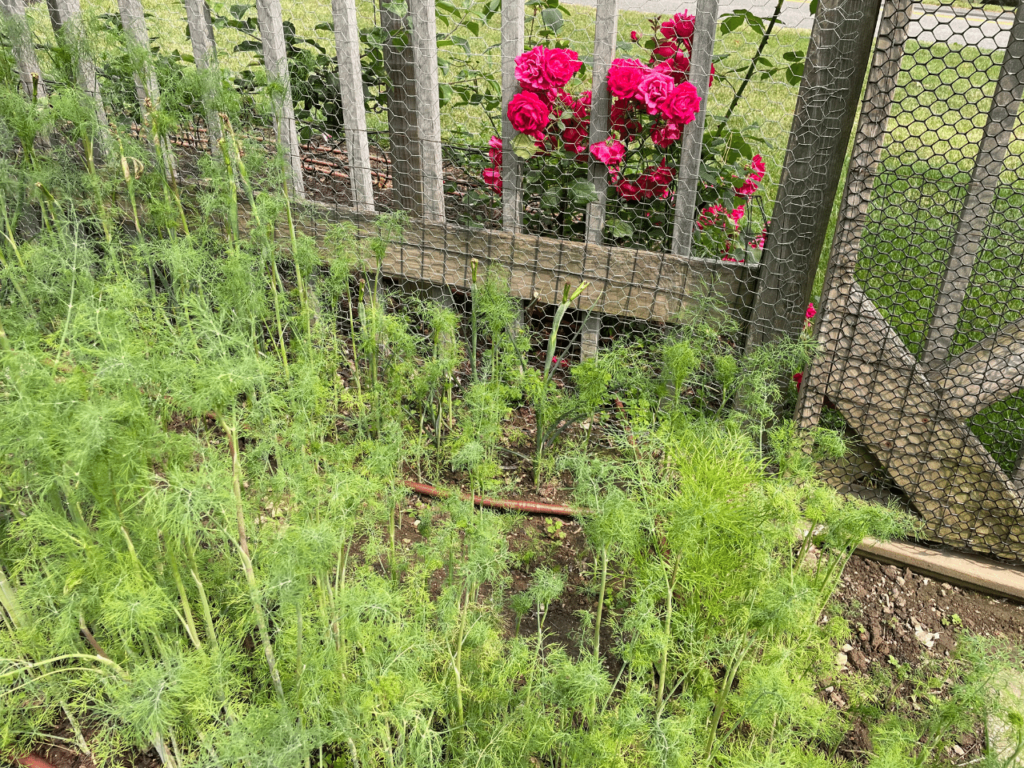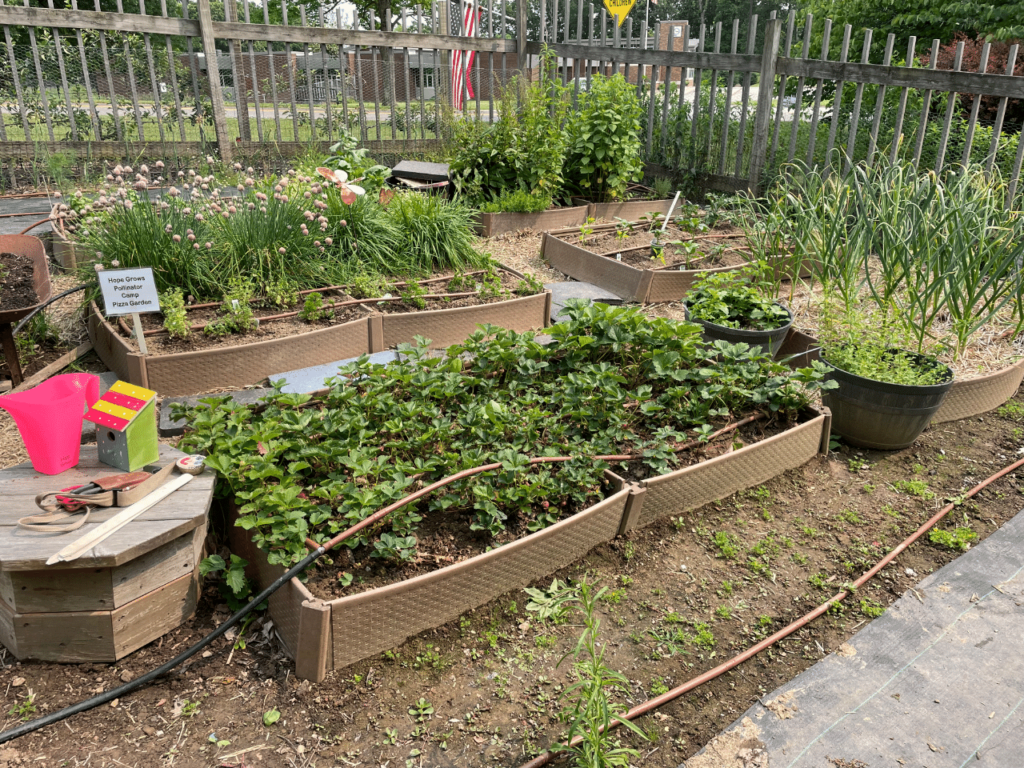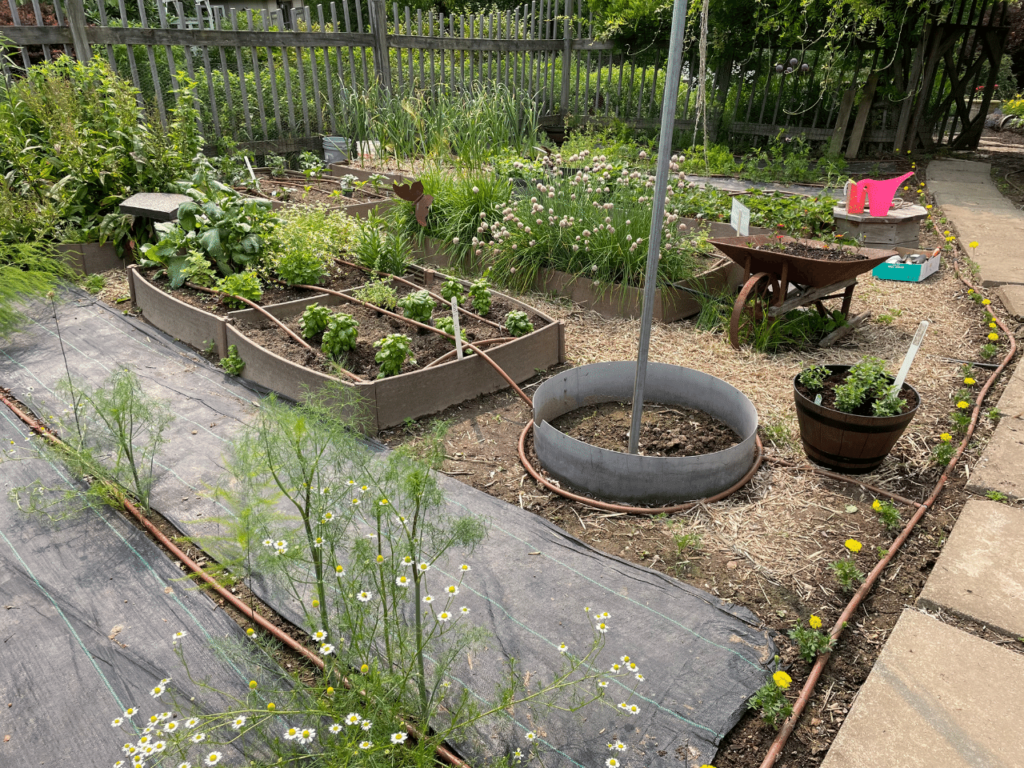PAP’S GARDEN
Pap’s Garden is named after Lisa’s father who died of pancreatic cancer in 2015. It was the second garden at the Iris Respite House to be developed. While this garden has a symbolic, healing story, the goal is to provide a source of nutrition and emotional healing.
Pap’s Garden is surrounded by the fence, mostly made from recycled materials, serves the purpose of protection from unwanted predators. The south side of the fence is adorned with bee balm, an herb that attracts good bugs, and the front of the garden is the home of climbing roses, annual flowers and espaliered (the art of selective pruning and training) apple trees.
While this garden feeds the body, the holistic and healing benefits began for Lisa the spring after her father died. While grief stricken for a period of time and feeling as if her body, mind and soul were not working in unison, Lisa needed a way to heal. With the help of her family, she planted her first ever-vegetable garden! During that year, Lisa began to feel whole again and so began her quest for creating healing and restorative gardens, at the site, and also using it in a professional way.
Pap’s Garden, as well as the others, is maintained from an organic perspective. The garden has drip irrigation to help with water and raised garden beds have been added. Over the years, the garden has produced many different vegetables, corn for fall harvest decorations, climbing beans to look like a tee-pee and flower cutting plants. In September, 12-foot sunflowers adorn the front of the garden, for all to see. Standard herbs, including lemon balm, tarragon, chives, lavender and oregano, used for tea and cooking. Other herbs have been added for their aromatic and potential medicinal properties.





Healing & Restorative Properties
The therapeutic effects of this garden are in the active nature of the growing of food and herbs and the beauty of cutting a bouquet of flowers. By putting your hands in the earth, you are absorbing the good bacteria that exists in the soil, which is called Mycobacterium vaccae. It is known to release serotonin in the brain, so if you feel better after gardening, there is good reason as to why
Suggested Therapeutic Activity
This is the most active garden on the property, along with The Garden of Transitions. Engage with the garden by actively getting your hands in the dirt with weeding, digging, planting, hoeing, cutting and helping to sell the herbs or flowers.
Volunteer Schedule
The garden effort on a yearly basis is approximately 3-5 hours every week during the spring and into the late fall season. Once every 2 weeks, for about 1-2 hours is an appropriate time frame for support.
Seasonal Maintenance Description
From spring to winter, this garden requires ongoing maintenance of weeding, preparing the rows, planting, cutting and winterizing.
Adopt the Garden
Cost: $1,500 yearly
Signage with name/company name will be in placed in the garden for one year.












